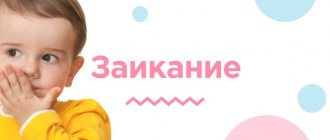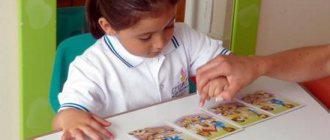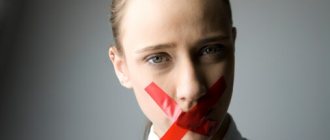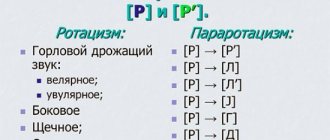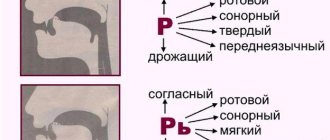Article:
Logoneurosis is a pronounced disturbance in the rate of speech, in the form of delays, changes, frequent repetitions, prolongation of individual sounds or syllables.
This problem manifests itself between the ages of two and six years. In this case, it is necessary to contact speech development specialists, since there may be several reasons for this phenomenon. Logoneurosis or stuttering is a speech disorder in which individual words or syllables are repeated. According to statistics, about 10% of children suffer from the diagnosis, and it occurs three times more often in boys than in girls. Logoneurosis and the army are quite compatible, except in particularly severe cases (when speech disorders are caused by disorders of the central nervous system). And also, when stuttering, a disability is not assigned.
Who may develop logoneurosis?
Logoneurosis in adults often stems from childhood, if it has not been eliminated. The longer a person stutters, the more difficult it is to treat. The most effective period in which therapy should be undertaken is 5 years. After this, the likelihood of complete relief from this speech disorder gradually decreases. According to medical statistics, about 18% of patients got rid of stuttering, which had been observed for more than 5 years.
If stuttering first appears in adulthood, it is necessary to conduct a thorough diagnosis, since such phenomena are extremely rare. Limitations in communication affect many aspects of a person’s social life. A person may avoid contact with other people, nervousness and stress may appear. Problems with speech lead to the so-called second round of experiences. Often you have to seek help from a psychotherapist, without whose help a complete cure is impossible. Getting rid of stuttering (logoneurosis) itself is a long and painstaking process.
It has been noted that stuttering is rarely observed in people with a balanced, calm character. Many adult patients suffering from logoneurosis have neurotic manifestations, which are expressed in nail biting, hair twisting, etc.
How does logoneurosis manifest in children?
In addition to pronounced speech disorders, children suffering from stuttering also experience other symptoms. Depending on the symptoms, neurosis is divided into different types - phobic. The presence of pronounced fears of something and obsessive, having the same type of movements. In children this is observed in the form of tics. There are a number of involuntary movements that can be observed:
- involuntary twitching of arms and legs;
- grunts;
- patting with palms or hands;
- wink;
- increased head turning;
- nose scratching
Exacerbations of logoneuroses occur during emotional experiences, which can be relieved by a change of environment or motor relaxation. The repetition of certain actions has a strict sequence and may even have their own names. In younger children, there is often a fear of sharp household objects and confined spaces. In some cases, a child may have a fear of speaking in front of people or embarrassment in simply answering an adult or another child. Over time, this can develop into a relapsing phase, which leads to an even deeper neurotic state.
At an older age, a child may develop various fears, increased anxiety, and the appearance of suspiciousness. In parallel with stuttering, mental disorders develop in the form of emotional instability, impressionability, and a tendency to develop various fears. Severe forms of secondary disorders may also develop. Such kids are withdrawn and have a harder time adapting to their surroundings, especially to a new team.
There are three types of symptom prevalence:
- Tonic logoneurosis. Delays in the form of speech pauses during which the child tries to say something. This manifests itself in the form of stretching sounds.
- Clonic. Repeating a specific sound over and over again.
- Mixed. Manifestation of both types.
The main symptom of any logoneurosis is stuttering. It occurs due to a spasm in the speech department, during which it is impossible to pronounce a particular sound. If the tongue or lips are compressed, articulatory spasms are observed. Logoneurosis is the repetition of one sound or part of a word or syllable. Typically, stuttering does not appear all the time, but only in stressful circumstances, strong emotions, quarrels, and various positive or negative circumstances. Logoneurosis is often accompanied by muscle spasms, frequent blinking, nervous tics, and lack of air. These are the main symptoms of logoneurosis in children.
What is logoneurosis in adults
In adults, stuttering is usually accompanied by a number of symptoms:
- increased anxiety;
- sleep disorders;
- appetite disorders;
- increased sweating;
- repetitions and pauses in speech;
- tics;
- feeling of suffocation.
When angry or frightened, temporary stuttering may occur. This picture is typical for most adult patients suffering from various logoneuroses.
How does adult stuttering differ from childhood stuttering?
If stuttering appears after experiencing stress, the use of sedatives may help. This will prevent this speech defect from becoming entrenched. Logoneurosis in an adult is different in that a person can speak normally in a calm state. In a child, stuttering is already present when constructing a phrase; in adult patients, internal speech remains unchanged. In terms of their external manifestations, logoneuroses look the same. Differences are observed at the mental level, accompanied by a number of associated symptoms.
The role of psychotherapy
Despite the fact that stuttering is a speech pathology, its treatment in adults is very often carried out not by speech therapists, but by psychotherapists, while when working with children, psychotherapeutic techniques are ineffective.
Experienced neurologists often in their practice encounter patients who know how to speak correctly, but because of some internal fears and problems, they are simply afraid of it. There are many examples of musicians who play wind instruments stuttering. Is it worth saying that they need to train their breathing? Should stuttering singers train their voice and articulatory apparatus? Of course, there is nothing wrong with these exercises, they will be useful to every person, but will they play a decisive role in correcting such a speech defect as stuttering?
In some cases, after such classes a person actually begins to speak correctly, but this is most likely due to self-hypnosis and the adult’s faith in specialists. That is, he came to a respected person, did everything correctly, which means he will speak. That is why, when working with children in correctional ways, these methods do not work on their own.
One of the most effective methods of psychotherapeutic influence is hypnosis. But specialists can use other correction methods. The choice of a specific technique largely depends on the identified reasons. After a stutterer gets rid of his fears, internal complexes, uncertainty and other psychological problems, he can quickly restore his speech and not remember the illness for the rest of his life.
Clinical picture
The main symptom of logoneurosis, which is included in the clinical picture, is stuttering. This concept can also include:
- repeated repetition of individual words or syllables that a person is not able to control;
- stretching or lengthening a word;
- increased tone of the facial muscles;
- respiratory spasms;
- high activity of facial expressions.
One of the obvious signs of speech logoneurosis is the presence of spastic breathing. Breathing is directly related to the voice, articulation, and movement of the larynx. Impaired respiratory activity leads to intermittent speech. If attempts are made to cope with this, the hitches only become more obvious and pronounced. Logoneurosis according to ICD 10 has code F-98.5. This is a group of disorders that begin in childhood.
Symptoms and types
There is a classification of logoneuroses. As it progresses it can be:
- Permanent. It appears constantly and in all forms of speech.
- Recurrent. appears and disappears without reference to various factors. Normal speech can be maintained for a long period.
- Wavy. The speech disorder subsides and then recurs.
According to the type of seizures, logoneurosis is divided into:
- Tonic type. Muscle contractions occur over a long period of time and have great force.
- Clonic. Alternating short spasms.
- Mixed. Both types are observed.
According to its clinical form, logoneurosis in children is classified into neurotic and neurosis-like. The neurotic type occurs in the absence of intrauterine or birth injuries and pathologies. The cause of this form is often psychological trauma or the introduction of a second language in early childhood. This type of logoneurosis is functional in nature, in which the brain structure is not damaged. That is why it is easier to treat.
Neurosis-like stuttering is often diagnosed in women during pregnancy, which is accompanied by toxicosis and injuries. In this case, speech disorders occur due to damage to the brain, its speech center. Clear manifestations are noticeable at the age of 3-4 years, when the child begins to actively talk, construct complex sentences, and communicate with others in separate structured phrases.
Degrees of the disease
There are three degrees of severity of logoneurosis:
- mild form - isolated convulsions are observed in spontaneous speech;
- medium – convulsions appear when speaking, but the person can speak absolutely normally for a long time;
- severe - speech convulsions are observed in any situation, including if a person is talking to himself.
This division is of a formal nature. Most experts note this classification as untenable, since it depends on many factors - time, specific situation, place.
Symptoms
The main symptom of stuttering is cramps (abnormal contraction of the muscles of the speech apparatus) during speech. Their duration can take from 1-2 to 12-13 seconds, and in some severe cases reach 80 seconds or more.
Be attentive to your child and help him overcome or prevent the development of stuttering.
In children with stuttering, the sequence in the pronunciation of individual words is also disrupted; children lose their train of thought due to pronounced pauses, experience emotional distress and, as a result, acquire character traits of a “defective” person.
Let us dwell in more detail on the feeling of inferiority, since this symptom largely determines the further development and course of stuttering in a child. This feeling is also called “painful fixation” of a stutterer.
There are three degrees of “painful fixation”:
- First Art. (children feel comfortable, and they do not experience embarrassment or shame due to a speech defect).
- Second Art. (children lose a sense of comfort, experience moderate embarrassment, shame due to a speech defect, and try to disguise it)..
- Third Art. (pronounced concentration on their speech impediment, experience severe embarrassment, shame. Usually this degree is noted in children of senior school age).
The effectiveness of treatment for children who stutter directly depends on the degree of “painful fixation.” The higher the fixity, the less favorable the prognosis for speech therapy work.
There are three degrees of stuttering:
- minor - stuttering appears only during excitement (expressed emotions) and during rapid speech.
- moderate - do not stutter at rest and in normal surroundings; Only when emotions are expressed does stuttering appear.
- pronounced - they stutter constantly.
Possible causes of the disease
Speech neurosis or logoneurosis appears in early childhood, around 3-4 years. The reasons that can provoke it are individual in each case. These may be hereditary or neurological reasons. In adulthood, the prerequisites may be neurological causes - lesions in the brain. This can happen after injuries, stroke, cerebral circulatory disorders, due to complications from a number of infectious diseases.
There are also neurotic factors (psychogenic), which include various mental traumas and imbalances in the nervous system. Neuroses caused by such reasons belong to a complex group that require an individual approach to treatment.
In children, the reasons for the development of logoneurosis are similar. They can all be divided into some groups:
- defects of the central nervous system caused by intrauterine pathologies, birth injuries, diseases at an early age;
- characteristics of the nervous system – increased tearfulness, anxiety;
- features of speech development;
- hereditary characteristics of the central nervous system;
- external pathogenic factors;
- development of speech at a late age;
- physical disabilities in a child that form complexes, feeling like a “black sheep” among other children.
There are also factors associated with the development of stuttering. These include:
- high demands from parents;
- frequent nagging, excessive control, there is no one strategy for raising a child;
- poor emotional contact with adults and peers.
Logoneurosis can be caused by frequent or constant stress, the atmosphere with the family in which the child lives. Frequent reasons are conflicts in the family, kindergarten, etc.
Etiological factors of the disorder
Logoneurosis can appear as a reaction to severe stress. Before a diagnosis of logoneurosis can be made, a specialist must understand what exactly led to it. For children there are three main reasons:
- head injuries, infections, cerebral palsy, brain tumors;
- mental disorders and diseases;
- hereditary factors.
In children, logoneurosis appears many times more often than in adults. If a child is just learning to speak, logoneurosis may be a normal phenomenon during the formation of the speech apparatus. For teenagers, the most common causes of logoneurosis are an unstable psyche, emotional instability, excessive dramatization, and impressionability. One of the most common causes of stuttering is family troubles and conflicts between parents.
Obsessive movement neurosis as a cause of stuttering
A common cause of the development of logoneurosis is obsessive movement. This may include involuntary blinking, tics, coughing, smacking, and others. Parents may not pay attention to this or not notice them at all. In the initial phase of development, the child is practically no different from other children, and parents are confident that this is temporary and will soon go away on its own. Over time, these movements become more and more noticeable to others and they appear more noticeably.
The child is examined by specialized specialists, such as an ophthalmologist or otolaryngologist, who do not see any problems in their field. Nervous tics are excitation of certain parts of the brain. This phenomenon has an instantaneous contraction of the facial muscles that occurs spontaneously and cannot be controlled.
External factors provoking logoneurosis
The development of a child is influenced by the environment in which he grows up - living conditions, environment, correct upbringing. Individual factors include sleep and eating schedules. The child should be in a comfortable environment and not experience mental and physical pressure from other children and adults. Ambient sound stimulation is of particular importance. For example, if the TV is constantly on in the apartment, loud music is playing, the child’s sound perception is disrupted. A small space and lack of fresh air can aggravate this situation.
Spontaneous factors that can lead to emotional and physical stress deserve special attention - accidents, encounters with wild animals, scandals, fights in the family, and others. Children who stutter have a predominance of excitation over inhibition in the functioning of their nervous system. That is, the inhibitory function of the speech apparatus is weakened. Accurate determination of the factor will allow you to select the correct treatment and treatment tactics.
Massage
Massage eliminates the excitability of speech centers and restores speech regulation. To eliminate stuttering in adolescents, acupressure, probe or segmental massage is used. The specialist influences:
- neck area;
- upper shoulder girdle area;
- facial muscles;
- muscles of the lips, tongue;
- larynx area.
The massage therapist massages the listed areas one by one. First it smoothes them, then taps them (vibration), stretches the skin and muscles. Each area has its own set of movements. Massage of the tongue and lips can be carried out using special probes. They act precisely, stimulating certain points.
The effect can be noticeable after the first procedure: muscles relax, spasm is eliminated, speech becomes smooth, without hesitation or pauses. To consolidate the result, a full course of 10–12 sessions is required. After a short rest, the duration of which is determined individually, a repeat course begins.
Ask a speech therapist to teach you self-massage techniques. By performing massage yourself as an addition to the main course of treatment, you can achieve greater results.
How to treat logoneurosis
Logoneurosis in children should be treated by various specialists, primarily speech therapists and psychotherapists. The latter is the main guarantee of effective therapy. Along with it, speech training, development of self-control, and improvement of intellectual capabilities should be carried out. Specialists use various approaches - the use of medications, physiotherapy, exercise therapy and others. Along with appropriate psychotherapy, this will maximize the elimination of these speech defects.
Treating logoneurosis in adults and children is a complex process that requires a lot of effort and time. In the case of a child, you will have to reconsider your relationships within the family, eliminate all conflicts between parents, and create a favorable atmosphere. A child should not suffer from his speech defect, otherwise he may develop an inferiority complex and other mental disorders.
Clinical therapy
Logoneurosis in adults can be treated using sedatives that have a calming effect on the nervous system. As an addition, you can include drugs that improve the overall functioning of the brain and its blood circulation. It is important to remember that such drugs should be prescribed exclusively by specialists.
Principles of psychotherapy
If logoneurosis or stuttering is based on psychological trauma, it is necessary to accurately establish its cause. To determine organic lesions in the brain, it is necessary to perform an MRI or CT scan. The treatment itself can be divided into two types - correction of neurological or psychological manifestations. Any logoneurosis is a multicomponent disorder that also requires a comprehensive solution. Each patient requires a special approach, developed exclusively for him. This applies to both children and adults.
A psychotherapist must work to eliminate psychological problems. A specialist conducts individual sessions to find the most optimal solution. Sometimes hypnosis, auto-training, and other techniques are used. These techniques are aimed at restoring the patient’s self-confidence and eliminating complexes associated with stuttering. As practice shows, for the treatment of stuttering in adults, hypnosis shows good effectiveness. After the sessions, the patient receives a recording of his own speech so that he can make sure that stuttering is significantly reduced or completely eliminated.
Speech therapy classes
Sessions with a speech therapist can help you get rid of logoneurosis. These techniques are designed to eliminate speech defects, provide clear and intelligible sound pronunciation, and make the patient’s speech fluent.
Primary therapy is carried out together with a speech therapist. Later, you can practice oral speech with your child on your own. The classes themselves can be individual or group. There are several methods for treating logoneurosis in children that have proven effective:
- Method of Vygodskaya, Uspenskaya and Pellinger. This treatment lasts 2-3 months and consists of 36 sessions. The basis of the technique is the creation of situations that form independent speech in the child. The entire lesson is conducted in a playful way, which makes it as comfortable and interesting as possible for him. In later classes, the specialist should help use detailed phrases.
- Smirnova's technique. Such classes are held every day, for about 20 minutes. The course lasts 30 weeks or one academic year. This program is designed to develop the rhythm and tempo of speech, improve fine motor skills, improve muscle tone, and also develop speech coordination.
- Silivestrov's technique. Treatment of logoneurosis in children lasts about 3-4 months and 32-36 lessons. This approach consists of three stages - preparatory, training, consolidation. At the first stage, a comfortable environment for the child is created, his verbal communication is narrowed. The second stage is a gradual transition from quiet to loud speech. At this stage, parents are also involved in the process. At the last, third stage, the child can independently construct a long conversation and read the text well and clearly.
- Shklovsky's technique. This course lasts about three months. The patient himself must be in a hospital setting. Psychiatrists, speech therapists, and neurologists work with him.
- Harutyunyan technique. The patient remains in the hospital for 24 days of therapy. Then 5 additional courses are conducted over one year.
Which method to choose in each specific case should be exclusively done by a specialist. Methods that are effective with children may not produce positive results with adults and vice versa.
Physiotherapy
Logoneurosis in children can be treated with complex therapy, which includes physical therapy. Exercise therapy for stuttering has some differences. It should affect all muscle groups and influence the stimulation and normalization of brain function. For adults, it is recommended to practice Nordic walking, skiing, and cycling. For exercise, you can use non-strength machines.
Such exercises are good for relieving nervous tension and affecting emotional stress. Logorhythmics exercises are good for young children. It is better to conduct classes outside and in the fresh air. Vitamin D, which is synthesized under the influence of sunlight, has a positive effect on the central nervous system.
Breathing exercises
Breathing exercises have the following effects on a child:
- coordination of rhythm and tempo of speech;
- learns to control his breathing, coordinate it with his speech;
- increase the tone of the abdominal wall;
- strengthen the diaphragm muscles;
- form breathing with the diaphragm.
Treatment of logoneurosis with breathing can take a very long time, sometimes even several years. For it to have the maximum effect, you need to perform the exercises correctly - you need to do them at least twice a day for 15 minutes.
Psychotherapy methods
These methods include two types of therapy - rational and suggestive. Additionally, the method of conducting auto-training is used. A rational method consists of a conversation with a specialist, who is called upon to form an adequate attitude of the patient to his problem. The suggestive method involves conducting one or several hypnosis sessions. Autotraining allows the patient to help himself independently. These skills are retained throughout life.
Gymnastics Strelnikova
This system consists of breathing exercises that were developed by this specialist. This approach has become widespread in medical science. It is aimed at eliminating diseases, including stuttering. It can be used for adults and children. Its main feature is its simplicity and proven effectiveness. The essence of the exercises is to alternate sharp breaths with simultaneous movements of individual parts of the body.
Competent help from a speech therapist
Any speech therapist is, first of all, a teacher who carries out correctional work in order to compensate for any speech disorders. Therapy should be carried out only after a systemic study of the existing physiological characteristics.
Recently, the treatment of logoneurosis in children and stuttering has changed markedly. This is due to the emergence of new methods, an increase in the number of specialists, and the emergence of new knowledge. Now you can look at getting rid of stuttering more optimistically and promisingly.
Where to go for treatment of logoneurosis?
Throughout the entire existence of the Ember center, our specialists have successfully relieved their clients (adults and children) from logoneurosis. Correction of logoneurosis should be carried out by competent specialists. Contact our center and our specialists will save you or your loved ones from logoneurosis forever. If necessary, classes can be held at home, in an environment that is comfortable and familiar to the client.
Make an initial appointment for the correction of logoneurosis by phone or fill out the application form on the website.
Therapy for children
Several effective methods and methods for getting rid of logoneurosis have now been developed. Usually they are used in conjunction with each other. The therapy itself is carried out in group or individual form. The main condition is that any treatment should be based on the individual characteristics of a particular child, taking into account all the physiological characteristics of the patient as much as possible.
If the origin of stuttering is due to a nervous disorder, medication may be required. However, most children manage without the use of special medications. If the reasons for the development of logoneurosis are psychological, the participation of psychotherapists and neurologists will be required.
Speech therapy correction
The work of a speech therapist in getting rid of stuttering is called correction, not treatment. The process itself consists of various elements, such as pedagogical influences on the child, comprehensive rehabilitation. Classes with speech therapists should be part of this complex work, requiring special patience, perseverance, and work. The classes themselves are structured individually and must correspond to the diagnosis and other personal differences of the patient - his age, etiology, degree of stuttering, and others.
If we talk about activities with the baby, they should have a playful form. As you grow older, you may begin to engage in more complex activities that have different, higher effectiveness. Specialists Vlasova and Rau have created a system of sequential exercises that gradually become more complex as you progress and obtain certain results.
Components of this system:
- At the first stage, the learned words, phrases, and poems are pronounced, and the technique of reflected speech is used.
- The second stage of correction of logoneurosis or stuttering includes the child having to independently describe the picture. Guided questions from an adult can help.
- The third stage involves consolidating the acquired skills in your everyday life.
For a school-age child, there are other ways. For such children, lessons and sessions with a speech therapist play a major role. The main emphasis is on overcoming the defect, and it is important to instill in the child the importance of independent learning. To obtain this effect, the Cheveleva method is used. In this method, the child makes crafts with his own hands, while voicing all his movements and manipulations.
There is also the Yastrebova method, which includes three stages of correction:
- the first stage is to study knowledge of linguistic speech;
- the second is the activation of skills;
- third – consolidation of acquired knowledge and speech skills.
There is another method that has proven its effectiveness, developed by specialists - Abeleva, Golubeva, Evgenova and others. They created a technique that can be used by children and adults. This type of correction consists of hypnosis, various relaxation techniques and other techniques.
The correction program from Harutyunyan is designed to overcome stuttering by working with fingers, that is, developing fine motor skills of the hands. These movements are synchronized with speech, affecting its rhythm. The classes themselves are conducted in small groups, no more than five people. The leading hand is on the thigh, and the fingers should press on the leg itself. Every syllable spoken, the finger should stop pressing. Thus, gradually the hands become a regulator of the speed of speech. This technique consists of four successive steps:
- the child must learn to relax, relieving muscle tension;
- learn to move your fingers correctly;
- training in pronunciation of words and individual phrases;
- working with texts and books.
One of the main disadvantages of the technique is the lack of a psychotherapeutic element in getting rid of stuttering. Treatment of logoneurosis in children does not have a clearly defined method, since each individual case must be examined separately, and the consequences of logoneurosis themselves can be observed throughout the rest of their lives.
Treatment methods for stuttering in children
There are a variety of methods of correctional work, the choice of which remains with specialists - speech therapists, neurologists, psychotherapists and others. Choosing a treatment approach on your own, without contacting medical professionals, is strictly prohibited. As soon as the first manifestations of logoneurosis are detected, parents should immediately seek help.
There are general recommendations that apply to various logoneuroses:
- provide the child with maximum peace of mind, eliminating stressful situations;
- if ridicule is observed from his peers, visiting such child care institutions must be stopped;
- it is advisable to limit the reception of guests;
- It is recommended to change the environment for the child, for example, go on vacation with him;
- physical activity will be useful;
- adherence to daily routine;
For adults, it is recommended to attend thematic seminars or workshops dedicated to the treatment of stuttering. As well as home exercises to improve diction, reading tongue twisters and special rhymes aimed at automating the pronunciation of sounds.
Breathing exercises
The exercises and techniques themselves are selected individually, based on medical history, symptoms, course characteristics and other differences. Initially, they are carried out under the supervision of a specialist, then they can be performed together with parents at home. Treatment of logoneurosis in children using breathing exercises is performed using three methods:
- static – a set of exercises aimed at general calming of the nervous system;
- dynamic – aimed at teaching proper rhythmic breathing while moving and talking;
- special – should only be carried out by specialists since a specialized tool is used for this.
All three methods can be used to treat stuttering or logoneurosis. The child must learn to control his breathing while talking. There are other methods that also have a positive effect on the patient. There are general recommendations from specialists for carrying out such exercises, which can be performed even independently, but under the supervision of adults.
Before starting classes, it is better to ventilate the room. You should not exercise after eating. The clothing of a child or adult should not be tight and put pressure on the chest or interfere with the patient in any way.
The breathing exercises technique itself looks like this:
- inhalation is done through the nose, exhalation through the mouth;
- there should be no break between these actions;
- Do not do exercises with diligence;
- as you exhale, a few words are pronounced – about 3-4;
- semantic pauses should be placed in long sentences;
Breathing should not be interrupted, it should be smooth, even and calm. The muscles should be relaxed. One of the main requirements is that you cannot move your shoulders.
Acupressure
Treatment of logoneurosis in adults and children can also be carried out using acupressure. It does not have to be carried out in an outpatient setting; it can be done on your own. Only the first lessons conducted by a professional will be enough.
The ban on homework applies only if there are any accompanying diagnoses and symptoms or there is strong muscle tone, which is impossible or extremely difficult to cope with on your own.
Computerized speech correction programs
There are various programs that can relieve stuttering in adults and children. They affect the speech and hearing centers of the brain. These classes are conducted using a microphone and headphones. The child pronounces the required phrases and hears them himself, but in a modified form.
Drug therapy
Stuttering or logoneurosis can be treated or its manifestations can be reduced in some cases with medications. They should be prescribed exclusively by a specialist; self-medication in this matter is strictly prohibited. Sedatives or sedatives are often used. They relieve nervous tension, relax muscles, relieve anxiety, and minimize the psychological factor from logoneurosis.
It is better to use mild sedatives made from medicinal herbs such as valerian, lemon balm, motherwort and others. Psychostimulants may be prescribed. They increase activity and add vigor. To achieve better results, a specialist may prescribe certain antipsychotic medications. They affect the transmission of impulses between nerve cells. Nootropics have a good effect on brain activity and improve memory.
Emotionally figurative therapy for logoneurosis
This method of treatment has appeared recently, allowing the correction of mental disorders and logoneuroses. This technique has especially proven its effectiveness for various psychosomatic disorders. It appeared in our country in the 90s.
For stuttering, imagery therapy is effective in eliminating manifestations of nervousness in a child. A significant part of logoneuroses is associated with psychosomatics, therefore, treatment with this method shows sufficient effectiveness.
4.Treatment
Currently, there are many effective methods for treating stuttering. The primary task is to normalize the attitude towards the disorder and develop a constructive, cooperative position in the patient himself, as well as in his immediate family. It is equally important to examine and, if necessary, adjust the system of intrafamily relations. Various psychotherapeutic techniques of relaxation, distraction, coping (overcoming) fears and mental blocks, teaching autosuggestive techniques, and desensitization are used. Systems of special speech therapy gymnastics, massage, and breathing have been developed. Sometimes drug support is used (tranquilizers, antispasmodics, antidepressants), in other cases it is not indicated and is inappropriate.
If an organic pathology of the central nervous system is detected, a course of adequate neurological treatment or neurosurgical intervention is prescribed (as indicated).
Today, in most cases, it is possible to achieve a complete cure or at least a radical reduction of logoneurotic symptoms. It is very important to seek help at the initial stage, at the first signs of disturbances in rhythm and fluency of speech, when the disorder has not yet acquired the character of stagnant fixation with a lot of secondary psychological consequences.
The role of the family’s response to logoneurosis in a child
A special role in the treatment of stuttering is given to the child’s family and environment. Higher risks exist if the child is constantly in an environment of stress, strong emotions, or if force or psychological pressure is applied to the child.
Parents should follow some recommendations from experts:
- maintain the correct daily routine of the child;
- do not overwork him;
- create a calm atmosphere in the family;
- use a calm metered tone when communicating with the child and each other, avoiding shouting or sudden movements;
- show interest in the child;
- TV or music should not be played all day;
- It is necessary to engage in development with the child.
Whatever methods and methods of treating logoneurosis are used, they may not have any result if these requirements are not met in the family.
Breathing exercises
When a teenager stutters, a spasm occurs in the muscles involved in articulation. The type of breathing is thoracic, which means superficial. Therefore, eliminating stuttering in adolescents begins with developing deep diaphragmatic breathing.
After classes, the diaphragm develops and the ligaments become more mobile so that the child begins to use breathing correctly in the process of speech formation, and maintain the pace of inhalation and exhalation. Hesitations associated with lack of air disappear, which means that fear goes away and the teenager becomes more relaxed.
There are many breathing exercises techniques, the most effective and popular is the method of A. N. Strelnikova. The technique is based on rhythmic breathing movements overcoming the resistance of the diaphragm.
The technique is as follows: the child takes a sharp breath, while making some movement, using the diaphragm muscles. After a series of breaths, he exhales calmly, then a new series of breaths. And so several repetitions.
As an example, here are a few exercises:
- “Palms” - the teenager stands or sits, arms along the body. During several successive sharp breaths, he should clench his fists rhythmically: and so on 8 times. Then exhale and a new series of breaths;
- “Pump” - legs apart, arms along the body. During inhalation, the child should bend forward, arms hanging down, back rounded. Exit - returns to the starting position;
- “Hug your shoulders” - arms in front of you and bent at the elbows, palms facing down, forearms on top of each other. When inhaling, you need to hug yourself by the shoulders, while your arms form a triangle.
Fighting stuttering at home
Most classes can be done at home. Some exercises, especially their first lessons, are carried out together with a specialist. Subsequent ones, when their mechanism is clear, you can do them on your own. The only exceptions are those that require special equipment, tools and other items. It is also an exception to have complex diagnoses that are caused by disorders in the nervous system or require the help of a psychotherapist.
Self-help techniques
Shows the positive effect of auto-training. Such exercises consist of practicing in front of a mirror to see your own facial expressions. They take about an hour and do not require much effort from the patient.
The main requirement is to maintain a calm, measured bottom pattern, have long, healthy sleep, give up bad habits, and not be stressed.
Prevention of logoneuroses
Prevention is measures that can prevent the appearance and development of speech in a child and an adult. Such measures can reduce the risk. There are three types of prevention of logoneurosis:
- prevention of speech disorders in children;
- relapse prevention;
- prevention of problems with the child’s social adaptation.
If the baby is too sensitive, weak, or has an unstable psyche, such measures are especially useful. When the first symptoms appear, the parent should immediately contact speech therapists and neurologists.
Folk remedies
Folk remedies can be effective in eliminating stuttering in adolescents. But they cannot replace other correction methods: drug therapy, physiotherapy, massage, classes with a speech therapist and psychologist. Therefore, be sure to consult with your doctor before starting treatment. Moreover, some products have contraindications - only a specialist will tell you all the nuances.
The most commonly used means are:
- inside - oregano, lavender flowers, drupes, linden blossom;
- externally (baths) - with rosemary, peony.

